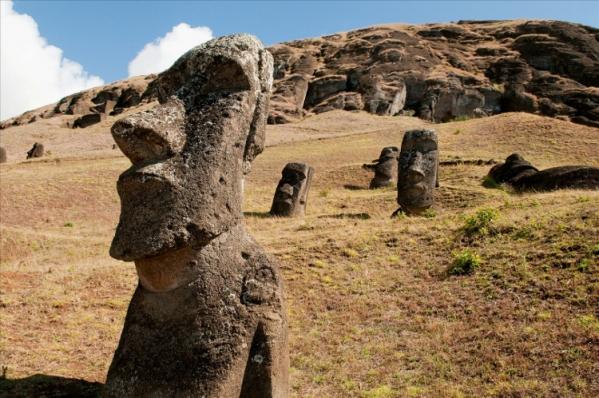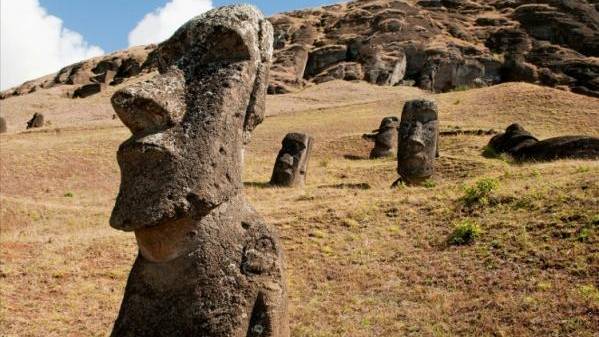How Deforestation Caused Easter Island’s Society to Collapse
Source: environmentalgraffiti.com

When the Polynesians first settled Easter Island as late as 1200 C.E., it was a sub-tropical piece of land covered with millions of palm trees. Five hundred years later, when the Dutch explorer Jacob Roggeveen came upon the island, there were no trees over 10 feet tall. The landscape was instead dominated by tall stone heads, known as Moai. Scattered across the island, the largest of these were up to 65 feet tall and weighed around 270 tons. Yet the island people the European arrivals found were emaciated and lacked an organized society. How could these people have constructed and transported such large objects?
The first setters on Easter Island found an island full of nesting seabirds and land birds. The soil, although low in nutrients, was good for growing the yams, sweet potatoes and other crops the people had brought with them. But it was the trees that were perhaps the most valuable resource for their society. The trees supplied fruit for the birds – both of which the humans ate – plus bark, used as a material for their clothing, and thatch for their roofs. The people also used the trees for building canoes and harpoons, which in turn helped them to hunt porpoises, their main source of food. What’s more, the trees supplied log rollers, sleds or levers, and rope made from fibers, all of which the islanders used to move and erect the hundreds of Moai heads for which Easter Island is now famous.
As well as bringing crops to cultivate, the early settlers developed systems of government and religion on Easter Island. They thrived for several centuries, yet their need for trees outpaced the ability of the forest to renew itself (with rats eating the trees’ seeds another possible contributing factor to the deforestation). Without the large palm trees, the islanders were unable to build their canoes and so eventually lost their main source of food. This forced them to focus their diet more on mollusks and birds, the latter of which soon also disappeared. With the land birds extinct and migratory bird numbers severely reduced, gone were the trees’ means of dispersing pollen and seeds.
[...]
Read the full article at: environmentalgraffiti.com






















